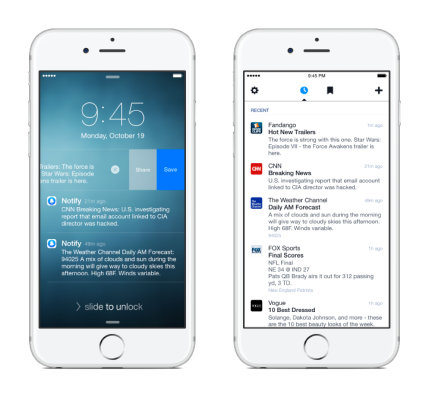Gone are the days of newspaper boys yelling, “Extra! Extra! Read all about it!” And the days of waking up and turning on the TV to local or national news as you get ready for work are slowly dwindling. Now, people wake up and look at their phones or tablets to check Facebook, Twitter, Instagram, and other social media platforms.
As a television producer who’s worked in both local and national news, I find it hard to watch as ratings and consumption seem to continue to trend downwards. But as a millennial, I understand because I myself turn to social media for news. Especially Facebook.
In my humble yet bold opinion: Facebook is the future of broadcast news.
CNBC wrote an interesting article after an interview with Nicola Mendelsohn — Facebook’s VP in Europe, the Middle East, and Africa — where she suggested the social media platform will be all video in the next 5 years.
And I 100% agree.
At Fortune‘s “Most Powerful Women International Summit” in London in June, “Mendelsohn said Facebook would ‘definitely’ be mobile, and would ‘probably’ be ‘all video’ within the next half decade.”
“‘If I was having a bet, it’d be video, video, video,’ Mendelsohn, who oversees 433 million users in her region, said on stage at the event.”
According to Fortune, users “currently watch an average 100 million hours of video on Facebook mobile per day and daily views have increased from 1 billion to 8 billion in one year.”
Mendelsohn added, “The best way to tell stories in this world— where so much information is coming at us—actually is video. It commands so much information in a much quicker period so actually the trend helps us digest more of the information in a quicker way.”
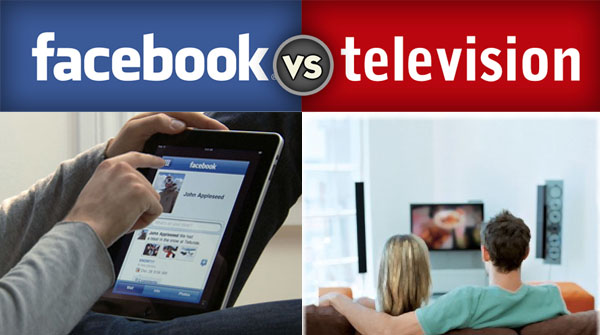
Broadcast news is already there with video. Very rarely is a story told with only images or text. And even so, they are in motion. I believe moving broadcast news to a social platform will increase consumption and lead to a greater awareness of what’s happening in the world. Facebook will be and should be the digital age answer as means of distribution.
Social media is instant. A user can connect with anyone in the world with one click. It is the job of news organizations to spread information to as many people as possible as quick as possible. This is where Facebook comes in. Viewers no longer need to wait for the 6 p.m. newscast to find out what happened. They can quickly pull up the video on their phone, computer, or tablet at whatever time they want. As Mendelsohn mentioned, video is the best way to portray the entire story. People want visuals as well as facts. It’s like the “put a name to a face” saying.
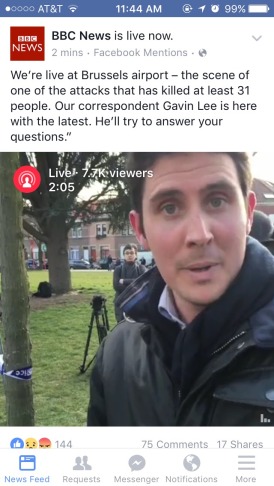
I believe news organizations can move to social media without losing too much control or conceding too much power to Mark Zuckerberg and the Facebook executives. News organizations can still control what they post, when they post, and how they post it. Timing and viewers are the only factors left uncontrolled.
Whether a story breaks at 6 a.m. or 6 p.m., with the new social platform, news organizations must be ready to record and post at a moment’s notice. This doesn’t necessarily change the personnel of a newsroom because there is often always a reporter or anchor in the studio at all times. No one knows when news will break so remaining on stand-by is always crucial. And I believe the instantaneous nature of social media will help news organizations deliver the information. Again, instead of people in the newsroom running around to gather everything and organize for a 6 p.m. show — which may come 12 hours after a story break, therefore viewers already have the information — the people in the newsroom can be the original source of the information and post maybe 5 minutes after something happens.
Viewers have never been in the control of a news organization, and with social media, they definitely are not. However, news organizations can receive immediate feedback through metrics and analysis of how many people viewed, shared, liked, or commented on the show. This insight can help news organizations see what their viewers want to hear or what peaks their interest. Then, they can curtail their newscasts to fit these desires. With news on a TV screen, there is no personal interaction between the on-air personalities and the viewers, which can cause robotic rifts or tension. With social media, the on-air personalities are more accessible and candid, which makes them more believable to a viewer. It increases engagement.
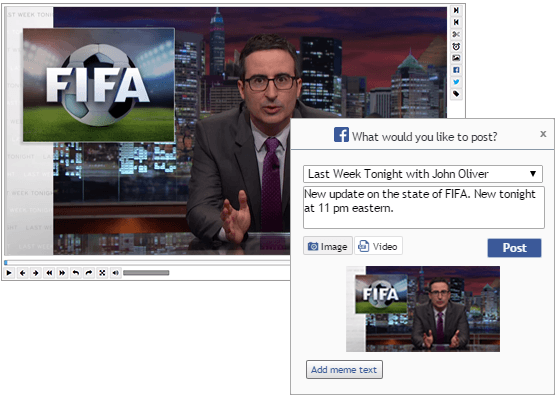
Social media puts information in front of users immediately. Therefore, it creates greater awareness of what’s happening in the world. News feeds create diversity and bring forth stories to the forefront that might often not make a newscast or be heard. A user’s newsfeed could list these 5 stories in a row: celebrity death, sports victory, consumer recall, storm hitting the Persian Gulf, and a local gas station gets robbed. All aspects are covered. A user may only care about one of these stories, but in a way, they viewed all of them or became aware of all of them. This is how the world operates and grows — by becoming aware of what’s going on. And that is the sole function of a news organization.
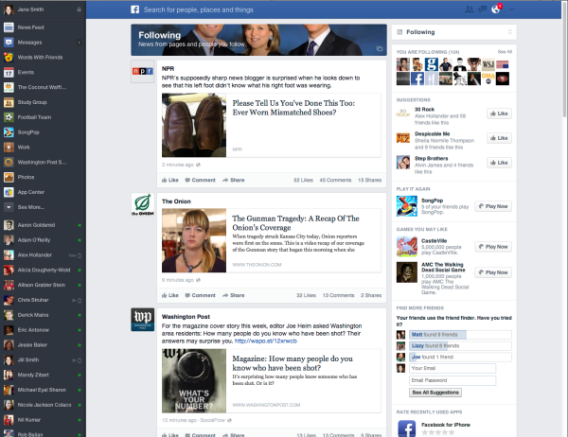
By combining the informative purpose of news organizations and the instantaneous nature of social media, I believe Facebook’s major contribution to news over the next 5 years is simply taking its broadcast platform over. No longer will viewers have to wait for their local newscast, and no longer will viewers already have their information so they don’t even have to watch the local newscast. The local newscast will be the source of a viewer’s information when news breaks. News organizations can now meet viewers at their convenience and deliver news in a more personable, direct, and desired way.
Forget the paper boy’s chants, forget the swoosh or radar sound effects on your TV. It’s all about text tones and notifications. With one click or swipe, it’s you and the anchor having a real-time conversation about what’s going on in the world.
